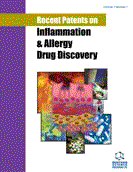Abstract
Anesthesia is defined as a total or partial loss of sensation and it may be general, local or topical, depending on the method of drug administration and area of the body affected. General anesthesia is a reversible state of unconsciousness produced by anesthetic agents, characterized by amnesia, muscle relaxation and loss of sensitivity to pain of the whole body. General anesthetic drugs can be classified into two main groups according to their predominant molecular pharmacological effects: volatile and intravenous agents. Local anesthesia produce a reversible loss of sensation in a portion of the body and it reversibly block impulse conduction along nerve axons and other excitable membrane. All local anesthetics (LA) are membrane stabilizing drugs; they reversibly decrease the rate of depolarization and repolarization of excitable membranes. They act mainly by inhibiting sodium influx through sodium-specific ion channels in the neuronal cell membrane, in particular the voltage-gated sodium channels. When the influx of sodium is interrupted, an action potential cannot arise and signal conduction is inhibited. The main local anesthetic (LA) agents for skin anesthesia are benzocaine (aminoester), prilocaine and lidocaine (aminoamides) which are commercially available as gels, ointments and creams (benzocaine and eutectic mixture of lidocaine and prilocaine) or as a bioadhesive (lidocaine) with different compositions (vehicles and excipients) for adults or pediatric use. Topical anesthetics decrease anxiety, pain and discomfort during cutaneous procedures and provide effective analgesia with rapid onset, prolonged duration and minimal side effects. This article outlines the different classes of topical anesthetics available and gives an overview of the mechanism of action, metabolism of each different class, of the possible complications that can occur because of their use and their possible treatment options and new patents.
Keywords: Analgesia, dermatologic procedures, muscle relaxation, new patents, pain, topical anesthetics.
 48
48


















